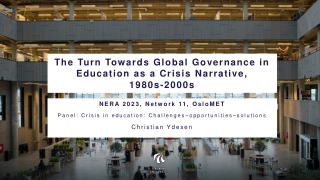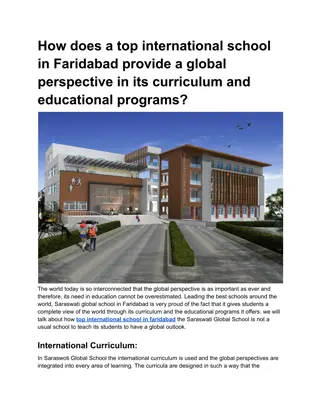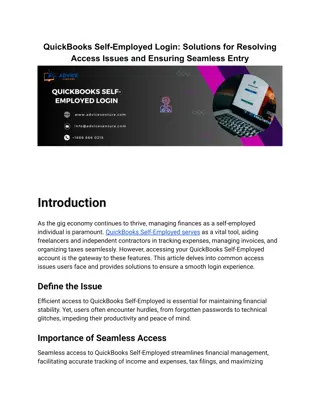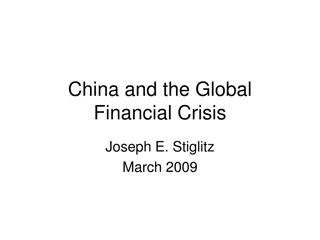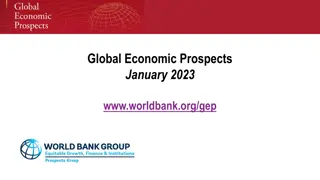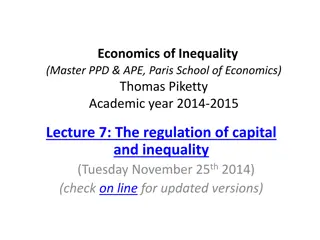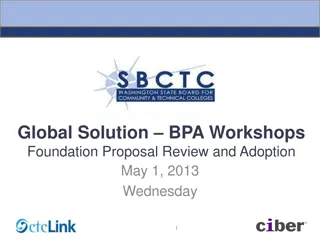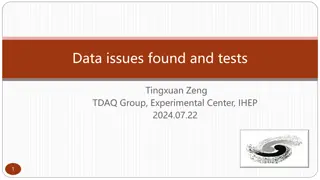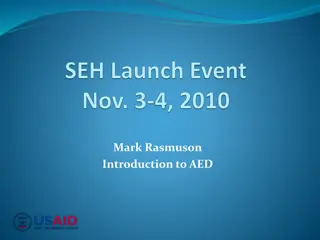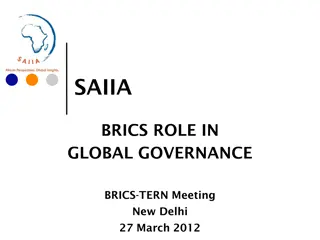GLOBAL ISSUES
Nuclear energy is generated through the process of fission, where uranium-235 splits into smaller atoms, releasing heat energy. A chain reaction can occur if the extra neutrons released strike other uranium-235 atoms. Nuclear reactors use enriched uranium to produce electricity safely, while nuclear bombs involve uncontrolled chain reactions resulting in devastating explosions.
Download Presentation

Please find below an Image/Link to download the presentation.
The content on the website is provided AS IS for your information and personal use only. It may not be sold, licensed, or shared on other websites without obtaining consent from the author. Download presentation by click this link. If you encounter any issues during the download, it is possible that the publisher has removed the file from their server.
E N D
Presentation Transcript
GLOBAL ISSUES Energy Crisis
GENERATING NUCLEAR ENERGY Fission When uranium-235 absorbs a stray neutron, it becomes extremely unstable, and something very interesting happens. Instead of emitting an alpha or beta particle or a gamma ray, the uranium-235 isotope splits into two smaller atoms along with two or three neutrons. Heat energy is released in the process. The splitting of an atom is called fission. Lone or stray neutrons are produced this way in the atmosphere by cosmic rays.
CHAIN REACTION Normally the extra neutrons released by the fission of uranium-235 escape the sample or are absorbed by the more stable and more numerous uranium-238 atoms (natural uranium contains only about 0.7% uranium- 235). A chain reaction will occur, however, if these neutrons strike other uranium-235 atoms. This causes more fission and more neutrons, which then hit more uranium-235 atoms, which then release even more neutrons ... and so it goes on and on. Huge amounts of energy are released in a fraction of a second. For a chain reaction to take off , the uranium sample needs careful preparation by either: enriching it so that it contains 2.5% or moreuranium-235 forming it into a shape to prevent too many neutrons escaping without first interacting with other atoms (spherical is good), or making it large enough (the required mass is called the critical mass).
NUCLEAR BOMBS A nuclear bomb uses uranium enriched so that over 90% of the sample will be uranium- 235. A massive and uncontrolled chain reaction results. The bomb dropped on the Japanese city of Hiroshima on 6 August 1945, nicknamed Little Boy , contained two half- spheres of 90% pure uranium-235.
Each piece by itself was smaller than the critical mass needed for a chain reaction, but when forced together by an explosive charge, they formed a supercritical mass which then exploded.
NUCLEAR REACTORS A nuclear reactor is like a controlled nuclear bomb, but uses uranium that has been enriched to about 2.5% uranium-235. To prevent an uncontrolled chain reaction, control rods made of neutron-absorbing boron or cadmium are used to soak up neutrons so that on average only one escapes from each fission to go on to cause another fission. Heat generated by nuclear fission in a reactor core is used to generate steam, which spins a turbine and produces electricity in the same way as conventional electricity generators. Nuclear reactors currently provide around 17% of the world s electricity. Several countries obtain about half their electricity from nuclear power plants. Submarines and space probes often use on-board nuclear reactors.
NUCLEAR DANGERS Nuclear power at one time seemed like the answer to the world s energy needs, but the initial enthusiasm has been tempered by a series of accidents and the problem of how to safely store deadly waste products.
NUCLEAR ACCIDENTS There have been several well-documented accidents at nuclear power plants in which radiation has been released into the environment. The most dramatic occurred at Chernobyl in the Ukraine (then part of the USSR, now an independent country) on 25 April 1986. Automatic safety systems were turned off during a test of reactor number 4, to measure the turbine s power output as it slowed after its steam supply had been shut off. When power levels fell dangerously low, engineers withdrew most of the control rods. Fuel rods then heated up and turned the moderator water into steam. The steam absorbed fewer neutrons, causing a power surge that heated the fuel rods even more. The super-heated fuel rods then exploded, and in turn caused a steam explosion which lifted the 1000 tonne steel-and-concrete lid off the top of the reactor.
A five-kilometre-high plume of debris released more radioactivity into the atmosphere than 100 Hiroshima bombs. The explosion started a fire that burned for five days. There were 31 immediate casualties. Nearby Belarus lay downwind of Chernobyl and much of it remains uninhabitable. Cancer rates there have also risen dramatically and the long-term toll may reach many thousands. A gigantic concrete structure called a sarcophagus was built around the damaged reactor to help contain the radiation, although this structure itself is now decaying and needs replacement.
NUCLEAR WASTE DISPOSAL Nuclear waste is classified into three levels. Low-level waste does not require a great deal of protective covering and includes things like air filters and gloves used by people such as nuclear power plant workers and hospital staff who handle radioactive substances. Low-level waste may be incinerated, stored in strong containers or buried at special sites. Intermediate-level waste is more radioactive and includes things like reactor parts. It is typically packaged inside cement within steel drums and buried in deep trenches. High-level waste is lethal and consists of wastes from either used fuel rods or generated from reprocessing the rods to obtain uranium and plutonium. Used fuel rods are stored under water for several years while they cool and their radiation levels drop before being reprocessed or disposed of. High-level waste is melted to form glass blocks and may be stored underground in
TWO SIDES OF THE STORY Because nuclear waste products can remain radioactive for many thousands of years (the half-life of plutonium is 24000 years), there is plenty of time for something to go wrong. Deterioration of storage containers or natural disasters could both cause leakage into the environment. Many people argue that the consequences of potential accidents involving nuclear waste or nuclear power plants are just not worth the risk. Others argue that damage being done to the environment (e.g. pollution and global warming) from the use of fossil fuels is greater than that resulting from the use of nuclear energy. Coal miners suffer more ill-health as a result of their work than nuclear workers. Oil spills from supertankers regularly kill huge numbers of marine and bird life. There are risks associated with both fossil fuels and nuclear power. What do you think?
Australia also needs to consider its involvement in dealing with nuclear waste. As we supply much of the world s uranium, should we be responsible for helping to deal with the waste produced? How much Australian uranium has already been used for illicit purposes such as nuclear weapons?
ALTERNATIVE ENERGY SOURCES There are many alternatives to fossil fuels and nuclear energy that will meet our energy needs in the future. Fusion One of those alternatives is in fact another form of nuclear energy! Nuclear fusion is when two small nuclei combine or fuse, releasing an enormous amount of energy as they do so. An example of nuclear fusion is the combination of a deuterium nucleus and a tritium nucleus to form helium.
Nuclear fusion has a couple of big attractionsno radioactive waste products are created, and there is a vast supply of deuterium in the ocean. But there s a catch! Temperatures of millions of degrees are needed to force two positively charged nuclei together and temperatures of hundreds of millions of degrees are needed to keep it going. It is nuclear fusion reactions that power the Sun. Even if we could generate a sustained fusion reaction, how could it be contained? Current research involves the use of a powerful toroidal (doughnut-shaped) magnetic field within a device called a tokamak to hold the superheated deuterium. The word tokamak is from the Russian word for toroidal. If the costs and difficulties involved in sustained fusion generators are overcome, fusion may provide the bulk of the world s energy in the future.
Other alternatives Other alternative sources of energy that offer potential for the future include: Solar Wind hydro-gravitational, wave or tidal Geothermal fuel cells bio-batteries.
Some alternative energy sources for the future. A: hydro, B: wind, C: geothermal, D: solar
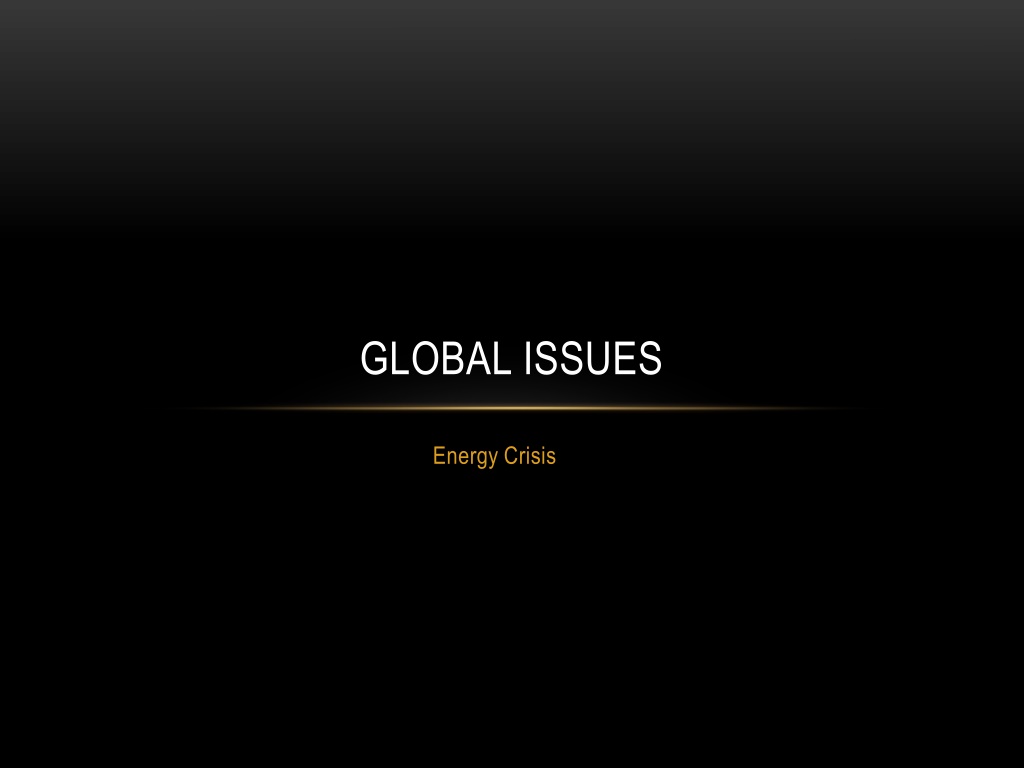
 undefined
undefined




